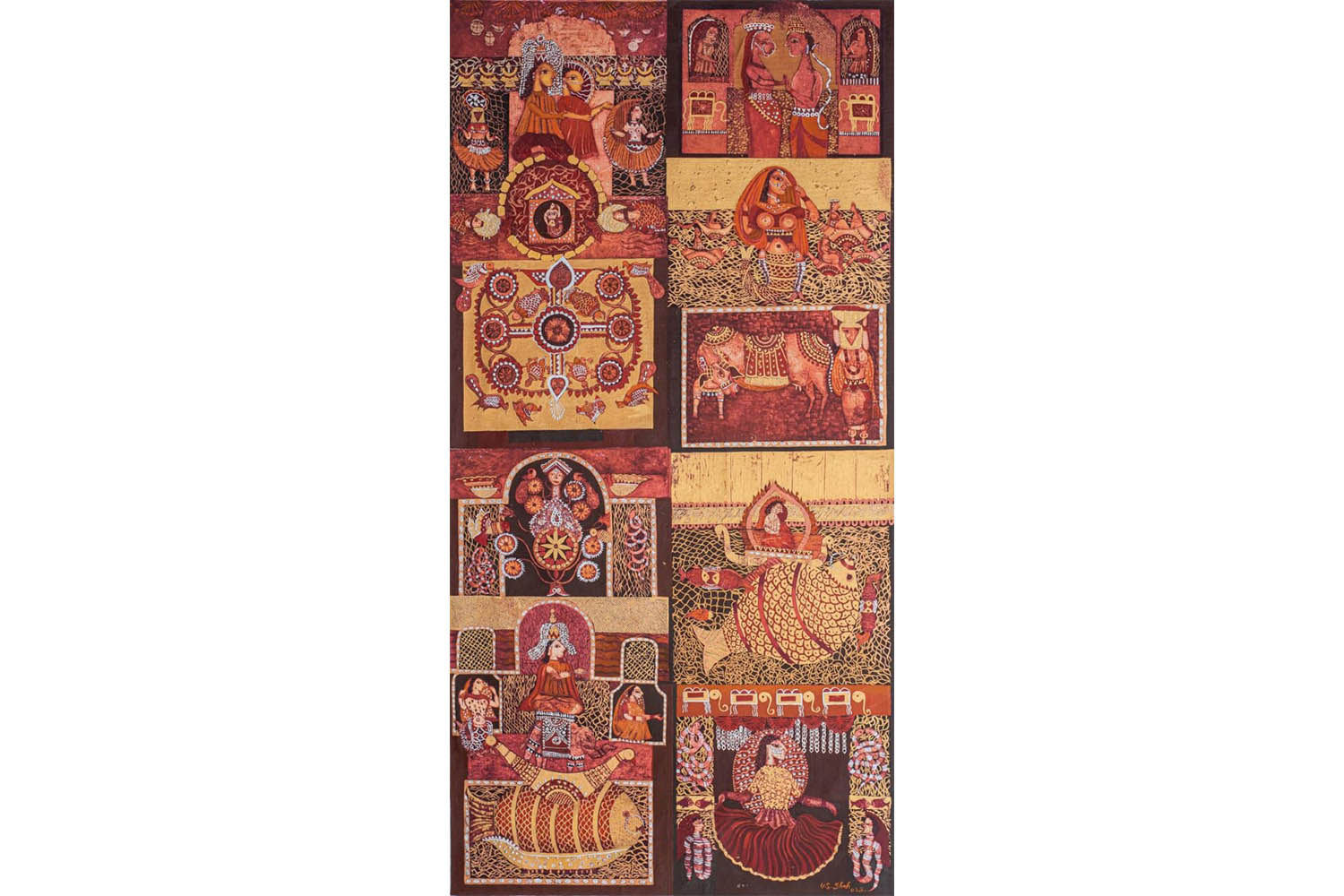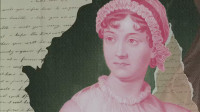Culture & Lifestyle
Identity, tradition and art
The ‘Resonance of Hues’ exhibition at Vivanta Creatives brings together eight artists who redefine traditional art forms, blending cultural symbols with personal narratives.
Sanskriti Pokharel
When I reached Vivanta Creatives for the ‘Resonance of Hues’ art exhibition, I was greeted by Umashankar Shah’s Mithila painting, ‘Folk Story’, which instantly made me feel at home. Such paintings feel comforting for someone from the eastern plains of Nepal, where most of my school and family trips were.
The painting portrays Sita’s birth, engagement with Lord Ram, journey to Ayodhya, and the battle where the demon Ravana is defeated. The artist uses Ramayana verses in Maithili, Awadhi, Bhojpuri, and Sanskrit to capture the piece’s essence.
Shah’s ‘Folk Story’ defies traditional gender roles by highlighting Mithila art, an art form predominantly practised by women, as a powerful challenge to patriarchal norms. I then moved towards Seema Sharma Shah’s paintings, whose artwork subjects include Kumari, goddesses, and Lord Buddha.
“When I arrived in Nepal in 1995, I was fascinated by the different forms of devotion I saw. Kumari’s morning prayers and daily rituals outside the main entrance of her house were unlike anything I had seen in India. I was amazed to see Kumari being worshipped as a living goddess. I also witnessed various Jatras, such as Samyak Jatra, Sindur Jatra, Rato Machendranath Jatra, Bhoto Jatra, and Seto Machendranath Jatra. I created a series of paintings inspired by them,” shares Shah, whose artworks are influenced by the deities and Jatras she observed in Nepal.
Namrata Singh considers herself fortunate that her father encouraged her to pursue a career in the Arts, something uncommon in Nepali society. She recalls, “As a child, I would collect colourful flowers and leaves, arranging them into random patterns. My father noticed this creative tendency in me. Once I started using a pencil, I became eager to draw pictures from my school books and proudly displayed them all over my bedroom.”

Singh’s true journey with art began when she closely observed the culture she grew up in, where art was an integral part of daily life. She was particularly captivated by the Mithila paintings on the walls of village houses and the colourful designs drawn for various festivals and rituals. These cultural expressions deeply fascinated her and fueled her passion for art.
Singh’s painting ‘Tune of Prosperity’ explores the stark contrasts between a woman's reality and society’s perception of her. After closely examining the artwork, I understood that the woman in the upper right corner represents all women valued primarily for the dowry they bring. Despite being celebrated, these women have their true worth diminished by patriarchal beliefs.
During my conversation with Singh, she shared her interpretation of the painting through two figures: a woman dressed in gold, carrying a golden pot, and a woman dressed in a blue saree. The woman in the blue saree challenges the traditional notion of Goddess Laxmi as merely the goddess of wealth. Instead, she represents the true essence of Laxmi, embodying prosperity, grace, beauty, and purity.
Singh’s ‘Light of Life’ painting showcases a woman holding a light. It gives a beautiful and powerful message that we do not need to seek light elsewhere, as light is inside us. I believe the light is also a metaphor for happiness, and this metaphor elucidates that happiness needs not to be sought elsewhere, as it is inside us. In her other paintings, Singh has masterfully employed imagery from women’s lives, showcasing their daily lives through her artwork.
Abhijeet Prajapati is a contemporary artist who uses mineral pigments, pen and ink, acrylic, and oil mediums. His artistic journey started in school. Prajapati said, “Through my art, I am trying to understand my inner demons. By confronting these demons or the negative aspects of myself, I am working towards becoming a more balanced and sane person,” Singh explains.
His black-and-white painting ‘Poison of Ignorance’ displays human tendencies of power, pride, and ego. The Kalash in the painting is a metaphor for our mind, whereas the Nagas represent factors of life and the flow of energy. According to Prajapati, whatever surrounds us creates us; what you have is just the projection of what you consume.

Oscar Wilde once said, “Art is the most intense mode of individualism that the world has known,” This statement beautifully resonates with the exploration of Mithila paintings and the artists’ journeys. Wilde’s notion of art as a profound expression of individualism can be seen in how these artists channel their individual and cultural experiences into their work, making their art a reflection of tradition and a unique expression of their identities.
‘Resonance of Hues’, a collective art show showcasing Nepal’s rich cultural art, is hosted by UNNATI, an initiative of the Chaudhary Foundation dedicated to preserving and promoting Nepal’s art and cultural heritage. This exhibition brings together the works of eight contemporary Nepali artists: Seema Sharma Shah, Umashankar Shah, Namrata Singh, Manju Khadka, Sujan Dangol, Sushma Shakya, Samjhana Rajbhandari, and Abhijeet Prajapati.
This event celebrates the worth of our cultural heritage and emphasises the importance of its preservation and promotion in today’s world. It serves as a platform to foster a deeper understanding and appreciation of Nepal’s artistic legacy, which resonates across South Asia.
Resonance of Hues
Where: Vivanta Creatives, Jhamsikhel, Lalitpur
Time: 10:00 am to 6:00 pm
Entry: Free
Till October 11




 6.12°C Kathmandu
6.12°C Kathmandu





.jpg&w=200&height=120)









